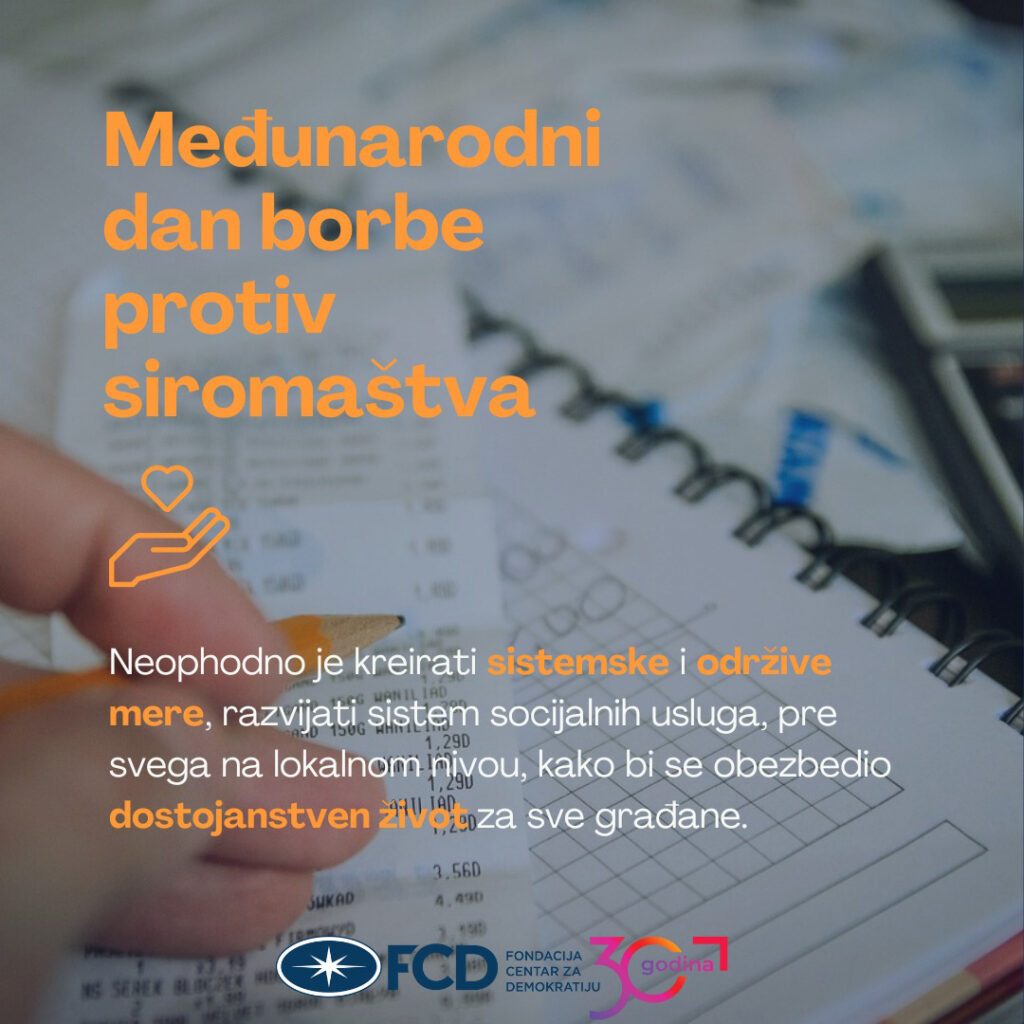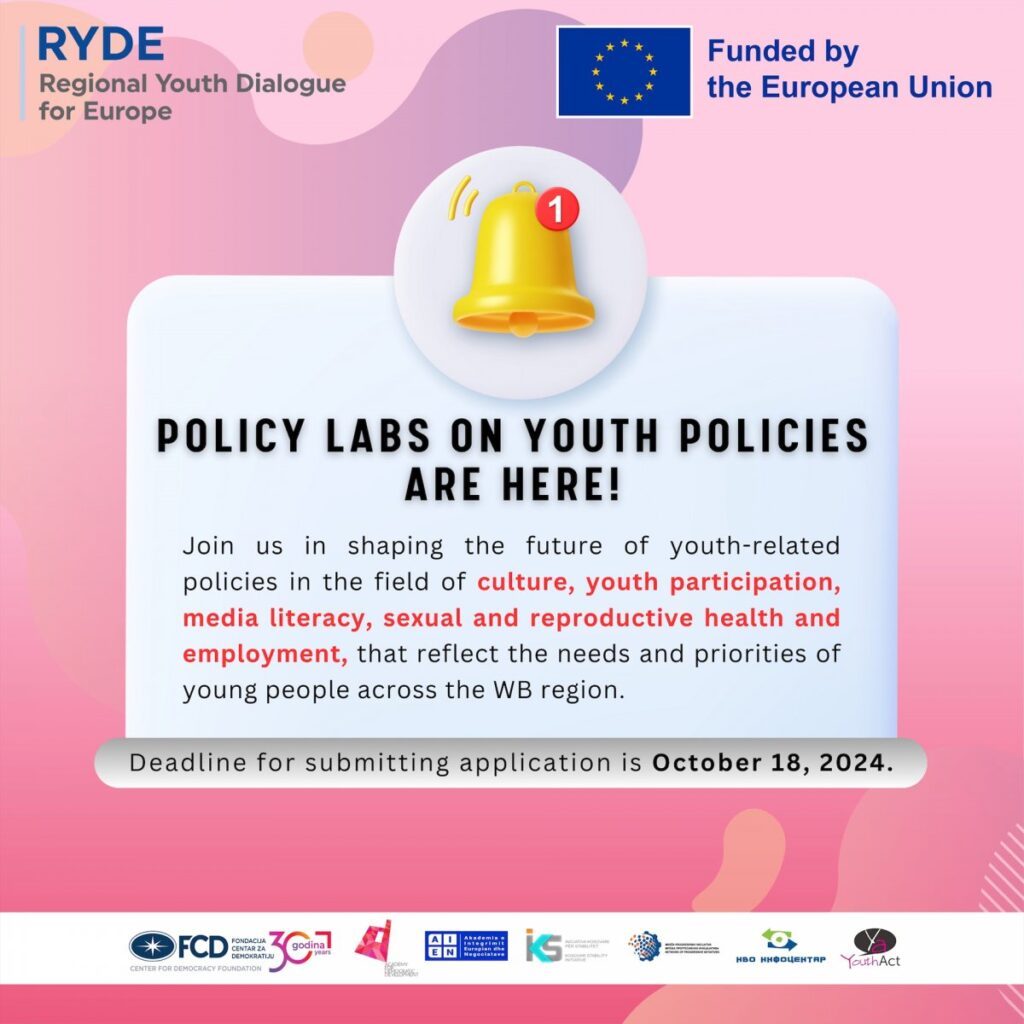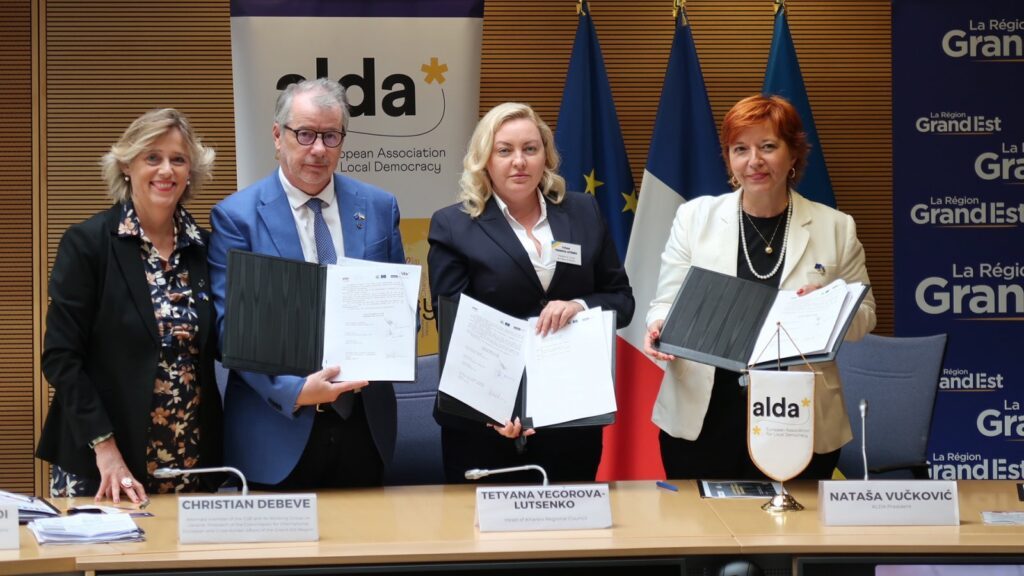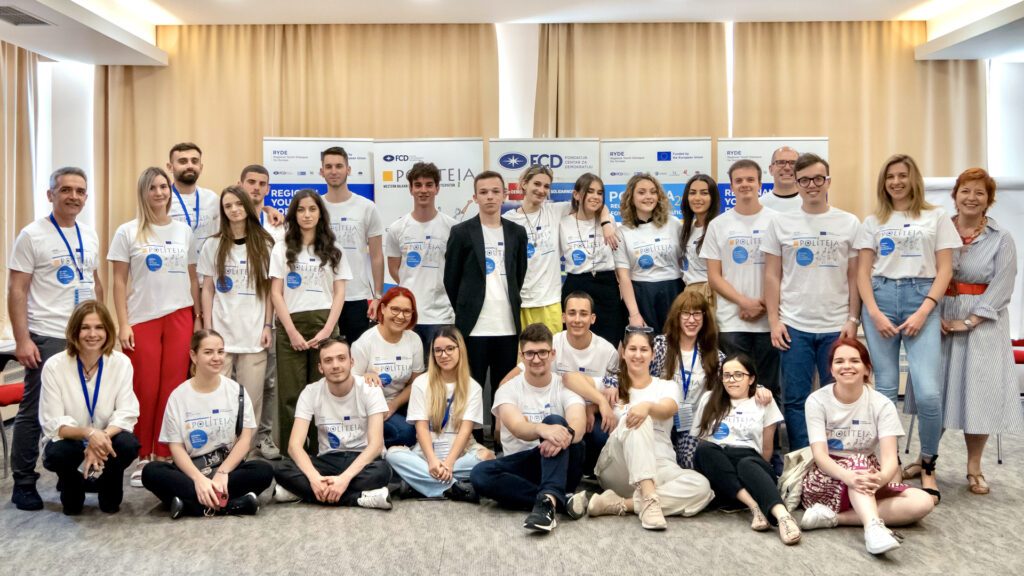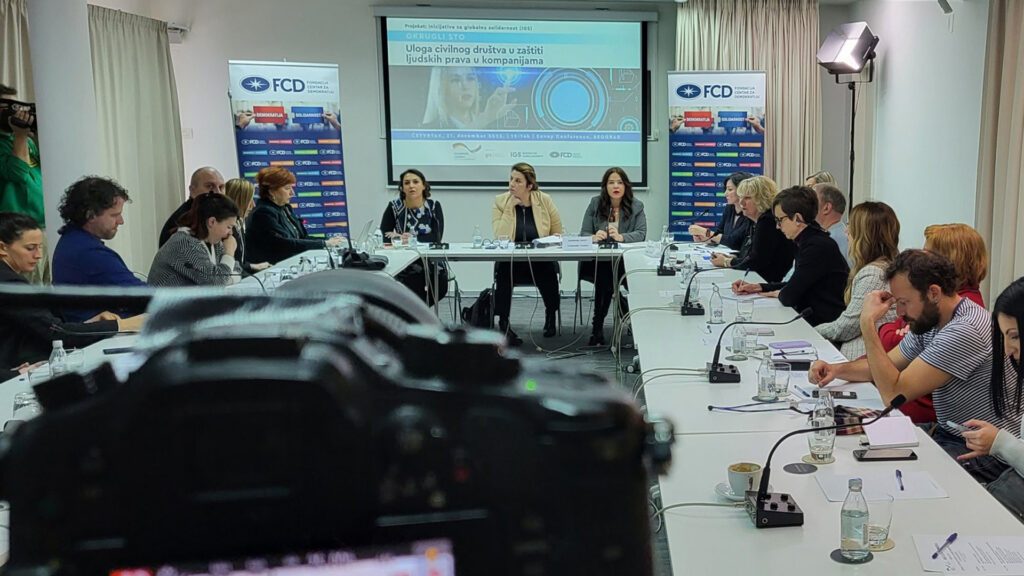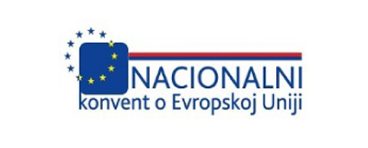Regional Youth Dialogue for Europe Project
The realisation of the rights of young people to actively participate in the decision-making process is an integral part of every developed democratic society and is guaranteed by the European Charter on the Participation of Young People at the Local and Regional Levels adopted by the Council of Europe. Young people have the right, and should have the opportunity, to fully participate in decision-making that affects their lives at the local and/or regional level.
However, due to the insufficient democratic capacity of WB countries, still burdened by the legacy of the last decade of the 20th century, young people in the entire region have very little trust in state institutions and political organisations. Despite the existence of a normative and institutional framework, young people are inadequately represented in institutions and lack an encouraging framework for participating in decision-making processes. Therefore, civil society organisations in the region play a crucial role in mobilising young people for political and social participation.
What is youth participation and why is it important?
In his well-known work Children’s Participation: From tokenism to citizenship, published by UNICEF in 1992, Roger Hart developed the so-called Hart's ladder of youth participation with 8 levels, which has gained widespread use in the field in the subsequent years. The term ‘participation,’ as used by the author, refers to the process of making decisions that affect one's own life and the life of the community to which they belong (Hart, 1992). Hart also states that a nation is democratic to the extent that its citizens are involved in processes, particularly at the community level (Hart, 1992). The author believes that young people should be engaged in significant activities with adults, but it is unrealistic to expect them to become responsible overnight. At the ages of 16, 18, or 21, they cannot participate without acquiring skills and responsibilities, gradually, through practice. Hart also emphasises that the involvement of young people in decision-making processes is particularly important for those belonging to vulnerable groups. Through participation, they learn to combat discrimination and repression.
Roger Hart, like many other authors in this field, believes in the dual importance of genuine youth participation in these processes: internal development of the young person, acquiring critical thinking skills, and comparing perspectives necessary for forming beliefs, and the contribution to the democratisation of society. Barry Chechkoway shares the same view, asserting that participation in political and social processes contributes to improving the civil rights of young people, democratising society, promoting their personal development, and providing them with meaningful knowledge and practical skills (Chechkoway, 2011).
Maria Grasso bases the political participation of young people on a crucial division into conventional (voting in elections, membership in political parties) and unconventional forms of participation (participation in protests, signing petitions, etc.). In her work "Young People Re-Generating Politics in Times of Crises," the author argues that young people are less active in conventional forms of participation compared to adults, while they are much more active in non-institutional models of participation, highlighting online activism as an increasingly important form of action (Grasso, 2018). She attributes the causes of this trend to the global economic crisis that occurred in 2008, as young people are perceived as the group most affected by the crisis. Young people are more inclined to choose non-institutional means because they are fluid, provide them with more freedom, and are linked to their identities.
Considering the above trend of young people moving away from conventional participation models, the Council of Europe commissioned a study in 2017 to identify alternative and innovative forms of youth participation. Anne Crowley and Dan Moxon, the authors of the study, found that young people are not apathetic and uninterested but are more inclined to participate in unconventional ways. Key findings indicate that co-management, co-production, digital participation, and deliberation represent innovative forms of participation for young people (Crowley & Moxon, 2017). Other global studies indicate that the majority of young people have a strong desire to actively engage with their community but lack sufficient knowledge concerning the decision-making process.
Youth Engagement at the European Level
Throughout the past decade, there has been talk of a crisis in European democracy, with many democratic policies worldwide facing challenges, as evidenced by the decline in traditional forms of political engagement, party membership, youth voter turnout, and the decline in electoral support for major parties. However, the last European Parliament elections held in 2019 were marked by higher youth turnout than in the previous period.
A Survey conducted by the European Youth Parliament in 2021 shows that nearly nine out of ten respondents (87%) have participated in at least one civic or political activity. Almost half of the respondents (46%) voted in the last local, national, or European elections, 42% initiated or signed a petition, while 24% participated in street protests or demonstrations. Approximately 29% of young people in the EU believe they have at least some influence on European policies, and this percentage increases to 44% where influencing local politics is in question.
The mechanism within the European Union that enables youth participation in decision-making processes is the EU Youth Dialogue, formerly known as the EU Structured Dialogue. It represents a consultative process between government representatives and young people, ensuring that the opinions and needs of youth are considered when adopting youth policies at the EU level. The EU does not have the mandate to create youth policies to replace those of its member states but consistently emphasises the importance of involving young generations and aims to formulate youth policies as responses to challenges faced by the youth.
It is worth noting that European research indicates that participants in Erasmus+ mobility projects for youth highlight a very clear and positive impact of their participation in projects on their competencies, behaviours, and values (Salto Youth, 2014). However, such projects have a significantly greater effect on young people with fewer opportunities, specifically those belonging to vulnerable groups. These projects contribute to the personal and professional development of participants, helping them appreciate cultural diversity and engage in decision-making processes on issues that affect their lives.
Western Balkans Youth – Passive Observers or Initiators of Change?
Legally, ‘youth’ are considered to be individuals between the ages of 15 to 29 in North Macedonia and Albania, while in Bosnia and Herzegovina, Montenegro, and Serbia, the term encompasses young people aged 15 to 30, and from 15 to 24 years of age in Kosovo*. The generations of young people in the region born in the 1990s and later are growing up in very turbulent social circumstances. As stated in a publication by the Regional Youth Participation and Dialogue Platform for the Balkans, young people in the region have become marginalised socially, economically, and politically. This has made them one of the most vulnerable social groups, significantly affected by the legacy of past conflicts and delayed transitions to democracy. Recent scientific research has shown that the social and political changes of the 1990s did not increase the chances of young people socially integrating or participating in decision-making processes. Engagement and active participation of young people are more than ever prerequisites for building democratic societies and ensuring peace and stability in the Western Balkans. Approximately half of the young people in the region do not see a perspective for staying in their country and wish to leave in the near future.
When discussing the passivity of youth in the context of civic and political activism, we refer to it from the perspective of conventional or traditional models of participation (membership in political parties, participation in elections, etc.). Young people in the region are now most easily and quickly mobilised through social networks, especially when they perceive an issue to be extremely important. All regional research in recent years shows that topics such as ecology and environmental protection are much more in their focus than before. Therefore, we can say that young people in the region largely participate in political and social processes, mainly through unconventional participation mechanisms such as participating in protests and engaging on social media (signing petitions, etc.). Civic and political engagement of young people through social networks may be insufficient, but it certainly expresses their desire to be actors in the political sphere whose voices need to be heard. Furthermore, online activism is not at the same level in all Western Balkan countries (e.g., it is much more significant in Serbia compared to Bosnia and Herzegovina).
The Regional Youth Participation Index for the Western Balkans for 2021, presented as part of the regional project Western Balkan and Turkey for EmploYouth, supported by the EU, measures three dimensions of youth participation in public life: political, economic, and social participation. According to the report, the youth participation index is 69% for Serbia, 64.4% for Montenegro, 63.4% for Albania, and 63.2% for North Macedonia, out of a maximum of 100%. The project was not implemented in Bosnia and Herzegovina and Kosovo*, so there are no such data measured by unified indicators for all economies in the region. According to the aforementioned research, political participation indicates the degree of young people's involvement in government bodies, the ability to obtain information and address state authorities, and the existence of youth institutions at local and national levels. Indicators of political participation include: a) the percentage of young ministers in the government; b) the percentage of assistant ministers in the government; c) the percentage of young members of parliament; d) the percentage of young mayors; e) the use of online tools for information and participation in decision-making processes of government, parliamentary institutions, and local self-government institutions; f) the existence of youth structures at the national and local levels (councils, parliaments, etc.). Regarding political participation of young people, Serbia has the highest level at 50.4%, while North Macedonia has the lowest at 40%. The index for Montenegro is 46.8%, and for Albania, it is 44.7%.
Young people are still insufficiently represented in political life in all economies covered by this Research. The number of young people in executive government roles in all economies is zero. During the research period, there were no ministers in the government and practically not a single mayor under the age of thirty. Deputy ministers under the age of thirty were present in Albania and Serbia only. The results for 2021 showed that in all countries, the majority of ministries and parliaments used online tools for public information, which is crucial for empowering young people for political participation. However, the report notes that the use of online tools by municipalities at the local level needs significant improvement in Albania and North Macedonia.
The above data indicate that all the economies in the surveyed region are far from reaching the goal. The Young Parliamentarians Forum of the Inter-Parliamentary Union, a global organisation of national parliaments, has set a goal of achieving 15% of parliamentarians under the age of 30 by 2030. The highest number of parliamentarians in any of the countries in the region was recorded in Serbia, with a percentage of 11.2% in the 2020 term when 28 young parliamentarians were elected to the Parliament. In the current term of the National Assembly of the Republic of Serbia (elected in 2022), out of a total of 250 members of parliament, only 9, or 3.6%, are young parliamentarians aged 15 to 29. Unfortunately, these numbers in our country don't mean much, as their participation is mostly a formality, especially in terms of young parliamentarians from the ruling party. As Barry Chechkoway claims: “The quality of participation is not measured solely by its extent or the number of young people involved in activities but rather by the actual impact on the process and a specific decision that produces a favourable outcome for youth. Youth participation refers to their active engagement and real influence on processes, rather than their passive presence or symbolic roles in processes led by adults” (Chechkoway, 2011). After Serbia, the second-highest percentage of youth participation was recorded in Montenegro in 2018, reaching 8.6%. The highest registered percentage of young mayors in any of the countries in the last five years was 6% in Albania from 2016 to 2018, although this percentage has dropped to zero in the last three years, following the latest local elections.
According to the latest population census in Serbia from 2022, young people aged 15 to 29 make up 15.8% of the total population in Serbia, which is a decrease of nearly 4%, compared to the previous census. The Alternative Report on the Status and Needs of Youth in the Republic of Serbia for 2023, regularly published by the National Youth Council of Serbia, shows that young people lack faith in any of the institutions examined in the study. The media, political parties, and political institutions – the President of the Republic, the Government of the Republic of Serbia, and the National Assembly of the Republic of Serbia – stand out with the least trust. However, Serbia is the first non-European Union member country to establish the EU Youth Dialogue mechanism (formerly the Structured Dialogue), institutionalised through the work of the National Youth Council. The report also shows that young people in Serbia do not follow local politics and believe that the political system does not enable them to influence political processes and decisions. The fact that youths in Serbia have very little influence on the decision-making process is among the top five issues facing this group and has increased over the past six year by 10%. The majority of respondents participating in the study are not political party activists, while 23% of them are members of some form of association.
Nevertheless, all is not lost concerning youth activism in Serbia. When we discuss unconventional mechanisms of political participation, the situation is somewhat different, especially concerning ‘digital activism’. Young people in Serbia, students in particular, often organise and lead protest gatherings, as well as initiate and sign petitions or public initiatives. A relevant example is the student protests held in Serbia in July 2020, organised over social media when the authorities took the decision to evict them from student dormitories as a result of the worsening situation with the COVID-19 pandemic. Only a few hours had passed from the moment the first complaints were published on social media until the time the students took to the streets. Regarding petitions or public initiatives, over 46% of respondents in the National Youth Council of Serbia’s survey highlighted that they had signed petitions or public initiatives over the previous two years (e.g., at the EU level, this percentage is 42%). In addition to signing petitions, the percentage of participants who engaged in other political or social activities in the last two years is as follows:
- 42.4% of young people participated in a protest organised by an association, students, an informal group, or citizens.
- 19.4% of young people participated in forums.
- 12.5% of young people supported someone in elections (participation in a campaign, signing support).
- 7.4% of young people participated in a protest organised by a political party.
Respondents note that youth organisations improve the position of young people and encourage and stimulate their activism. However, they emphasise that youth organisations are not visible enough among young people, and student organisations often have a political background, leading to students' disappointment and demotivation to participate in any other organisations.
In terms of Albania, a study by the Westminster Foundation for Democracy in Tirana from 2019 indicates that young people are distancing themselves from political parties, where 80% of respondents were not involved in parties either as members or activists.. Only 10.8% of them were members, while 9.2% were activists. Approximately 40% of young people in Albania had never been involved in public hearings or the signing of petitions. However, 23% of young people then expressed their belief that youth participation in the public sphere in Albania had increased. As in other Western Balkan economies, youth and other non-governmental organisations working with young people are considered key actors in the field and often serve to fill the gap in youth-related issues not covered by public institutions.
A similar situation is observed with young people in Kosovo*. Research indicates an extremely low level of trust among young people in Kosovar institutions, raising questions about their effectiveness and integrity. Youth organisations are active, but they operate mainly in large urban areas, while young people from rural areas are excluded from the processes. Despite efforts to increase youth participation and promote volunteering, the number of young people actively participating in society and volunteer work is very low. Existing mechanisms for direct youth participation in decision-making processes are deemed insufficient and ineffective.
In North Macedonia, young people generally believe that they cannot influence government decisions and do not participate to a satisfactory extent in social and political processes. According to a study conducted by the Westminster Foundation for Democracy in Skopje in 2019, 85% of young people stated that they had never been consulted by authorities, neither at the local or the national level. Nearly 71% of young people perceive themselves as socially inactive, with only 7% identifying as members of a political party. Approximately 90% of young people have never been part of a non-governmental organisation dealing with social issues. Approximately 70% of young people consider online activism more important than conventional participation mechanisms. Only 8% of young people have taken steps to address a specific social issue. However, the research shows that 64% of young people always vote in elections, even though every other young citizen does not believe that voting can influence the situation in the country.
According to the Friedrich Ebert Foundation's research in Bosnia and Herzegovina for the year 2018/2019, the majority of young respondents expressed that they have voted and consider it a civic duty. They have a clear understanding of their role in legitimising the rule of representative democracy but are generally politically uninvolved, whether in terms of participating in protests and petitions or working for political parties. Trust in political institutions, including the Presidency of BiH, the Parliamentary Assembly, the government, and political parties, is at an exceptionally low level. The specific way of direct participation in decision-making processes in Bosnia and Herzegovina also depends on which part of the country the young people come from. At the level of Bosnia and Herzegovina, there is no law on local self-government, as these laws are enacted at the entity level.
According to the latest Research and assessments of local policies related to youth and the needs of young people in 15 local self-governments in Montenegro, conducted by the Institute for Strategic Studies and Projections from Podgorica in 2022, on average, every other young inhabitant of Montenegro believes that young people are interested in being involved in decision-making on matters that directly impact them, and a quarter of young people state that they are very willing to participate in decision-making processes. However, they are not familiar with the mechanisms available to them for involvement in decision-making. The research has shown that the previous experience of young people is generally negative regarding participation in such activities, and involvement is formal, often limited to those already recognised as more active community members, or is carried out along political lines.
Despite their rebellious natures, young people in the WB region are alienated from politics and do not believe they can influence decision-making which impacts their future. They are distanced from political parties, with only a small percentage actively engaged political parties or organisations. Throughout the region, politics is generally viewed as a ‘dirty game’, a game young people do not wish to participate in. The poor functioning of democratic institutions, nepotism, corruption, and slow economic growth have contributed to a negative perception of political engagement among young people, leading to abstention as a form of resistance to the system. While their expectations are often justified, the Western Balkans youth need to understand that they are the main drivers of societal change and should participate in processes which have a direct or indirect impact on their quality of life. The world and everything in it belongs to the young.
Author: Andrea Trajković, Project Manager and Youth Activist
* This publication was funded by the European Union. Its contents are the sole responsibility of the Center for Democracy Foundation and do not necessarily reflect the views of the European Union.
